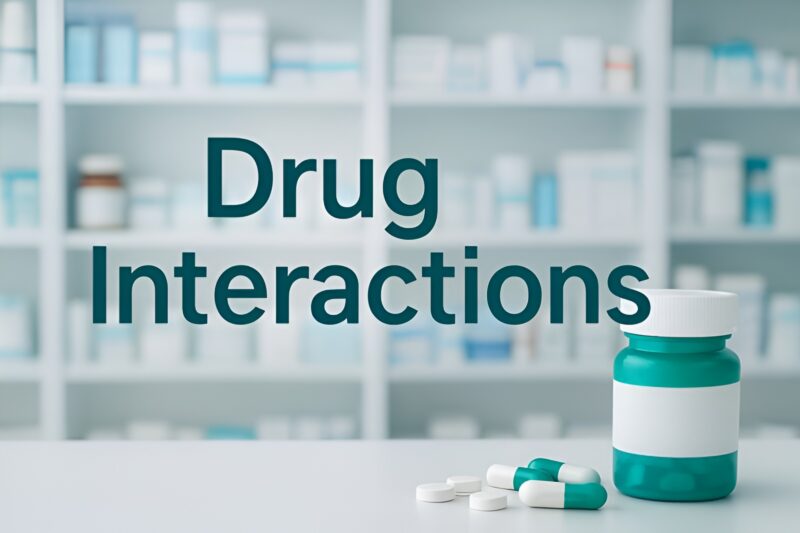
Ahmed Abdalbagi – Drug Interactions Every Healthcare Professional Must Know
Ahmed Abdalbagi, Pharmacist at Pharma Trading Co.Ltd., posted on LinkedIn:
”CRITICAL ALERT: Drug Interactions Every Healthcare Professional Must Know
Patient safety hinges on our vigilance. As medication experts, pharmacists play a pivotal role in intercepting dangerous drug interactions that can lead to hospitalizations, permanent harm, or worse.
Here are clinically significant interactions, updated with current guidelines, that demand our immediate attention:
Sildenafil (and all PDE5 inhibitors) + Organic Nitrates (Nitroglycerin)
Risk: Profound, refractory hypotension. This is an absolute contraindication. Life-threatening.
Clopidogrel + Omeprazole/Esomeprazole
Risk: Significant reduction in Clopidogrel’s antiplatelet effect due to CYP2C19 inhibition. Increases risk of stent thrombosis and cardiovascular events. Use Pantoprazole or Rabeprazole if PPI is essential.
Warfarin + NSAIDs or Metronidazole
Risk: Potentiated anticoagulation and synergistic GI irritation. High risk of major bleeding. Monitor INR closely; recommend paracetamol for pain.
Potassium-Sparing Diuretics+ ACEi/ARB (Captopril, Lisinopril)
Risk: Severe hyperkalemia. Mandatory potassium monitoring is required, especially in patients with renal impairment or diabetes.
Gentamicin + Loop Diuretics (Furosemide)
Risk: Additive ototoxicity. Permanent hearing damage can occur. Closely monitor renal function and avoid concurrent use when possible.
SSRIs+ NSAIDs/Aspirin
Risk: Significantly increased risk of upper GI bleeding. The combination requires gastroprotection with a PPI.
Ondansetron + Tramadol
Risk: Ondansetron can blunt the analgesic effect of Tramadol by inhibiting its activation via CYP2D6. Consider alternative antiemetics like Metoclopramide.
QTc-Prolonging Agents: Fluoroquinolones (Levofloxacin) + Macrolides (Clarithromycin) + Antipsychotics
Risk: Additive QTc prolongation, potentially leading to Torsades de Pointes. A critical consideration in polypharmacy patients.
Statins (Simvastatin, Atorvastatin) + CYP3A4 Inhibitors (Clarithromycin, Fluconazole)
Risk: Dramatically increased statin levels, leading to rhabdomyolysis and acute kidney injury.
Digoxin + Amiodarone / Clarithromycin / Verapamil
Risk: These drugs increase Digoxin serum concentrations, leading to Digoxin toxicity (nausea, bradycardia, arrhythmias). Dose reduction and close monitoring are essential.
Why This Matters:
Polypharmacy is on the rise. In our collaborative practice, a single alert from a pharmacist can be the line of defense against a preventable adverse drug event (ADE). Medication safety is a non- negotiable team sport.
What is the most critical drug interaction you’ve intervened on recently? Share your experience to elevate our collective practice.”

Stay informed with Hemostasis Today.
-
Nov 19, 2025, 18:03Andres Ricaurte Fajardo on a Strongyloides Stercoralis Hyperinfection with Thrombosis
-
Nov 19, 2025, 17:50Marilena Vrana Reflects on PPTA Europe’s Visits with Members and Stakeholders in 2025
-
Nov 19, 2025, 17:32Michael Makris Shares Insights from Global Forum Meeting of the WFH Meeting in Montreal
-
Nov 19, 2025, 17:14Yazan Abou Ismail Takes The Legacy Award from Qatar Foundation
-
Nov 19, 2025, 17:02Wolfgang Miesbach Shares Real-World Evidence on Eptacog Beta from Spain
-
Nov 19, 2025, 16:34Ishita Singh Reflects on Haematocon 2025: A Reminder of Her Commitment to The Journey
-
Nov 19, 2025, 16:23Mehdi Kashani: I’m Really Excited to Share Schistosite.com
-
Nov 19, 2025, 16:09A ”Meow-cyte” from Melaku Abay Muluneh or Why Microscopy Never Gets Old!
-
Nov 19, 2025, 15:56Cuilan Li on her Contribution to a Cutting-Edge Project in Polycythemia Vera
